Basics of Three-phase Systems
Three-phase electrical systems are the foundation for modern energy generation, transmission, and distribution due to their efficiency and dependability in providing electricity. Unlike single-phase systems, which use a single alternating voltage, three-phase systems use three voltages or currents that are phase-shifted 120 degrees relative to one another. This section discusses the fundamental arrangement of three-phase systems, their representation using phasor diagrams, and the distinction between line and phase values.
Configurations
The three-phase system configuration consists of three alternating currents (also known as phases) that are generated and transmitted simultaneously. These phases are referred to as Phase A, Phase B, and Phase C.
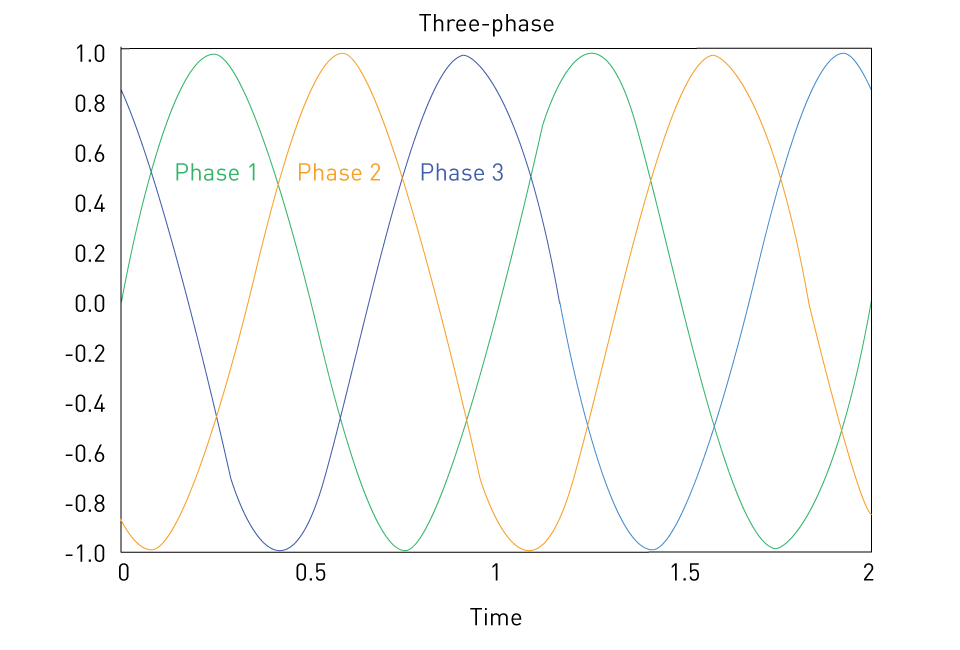
Figure 15: Three-phase AC
The three-phase system can be connected in two methods: Delta (Δ) and Wye (Y or Star) configurations.
Delta (Δ) Configuration: A Delta configuration connects the ends of each source to form a closed loop in the shape of a triangle or delta. Each side of the triangle carries one phase, allowing current to flow via two sources connected in series, creating a channel for the third phase.
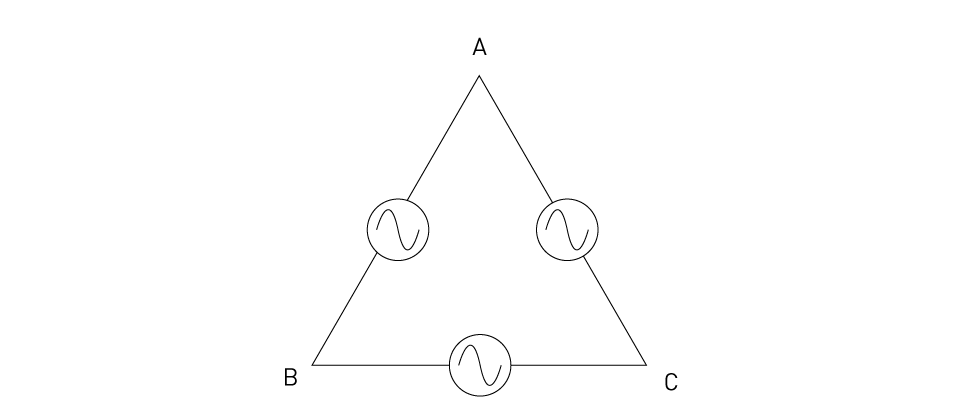
Figure 16: Delta configuration
Line Voltage Equals Phase Voltage: The line current in a Delta connection is √3 times the phase current, while the line voltage is equal to the phase voltage. This characteristic makes the Delta configuration appropriate for systems that need a large current capacity at a constant voltage.
No Neutral Point: The Delta configuration lacks a neutral point, making it more unsuitable for systems that need one for grounding or balancing.
Wye (Y) Configuration: The Wye design connects one end of each source to a common point, resulting in a 'Y' shape. The other coil ends are linked to the load. This configuration allows for the use of both line and neutral connections, which provides voltage level flexibility.
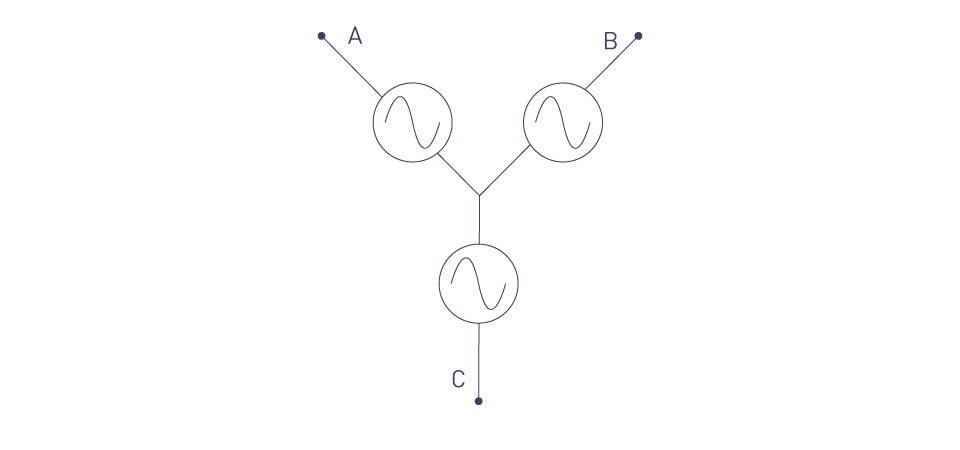
Figure 17: Y-configuration
Phase current equals line current: In a Wye configuration the phase current equals the line current, but the line voltage is √3 times greater, allowing for power delivery at various voltage levels.
Presence of a Neutral Point: The Wye configuration contains a neutral point, which enables the connecting of loads that require a neutral for safety or operational purposes. The neutral also helps to balance loads between the three phases, which improves system stability.
It is possible to connect three-phase sources and loads in a Wye or Delta configuration. While Y-connected systems can employ a fourth neutral wire, delta-connected systems are generally three wire systems.

Figure 18: Delta-connected generator with delta-connected load
When deciding on a configuration for a three-phase system, numerous practical considerations must be considered, which follows:
System Voltage Levels: The voltage levels required for the application may impact the choice of Delta or Wye designs. Wye configurations are frequently used for high-voltage transmission because they offer several voltage levels and a neutral connection.
Load Balancing: A Wye configuration may be more appropriate for systems that service a mix of single-phase and three-phase loads because of its neutral connection, which allows for better load balancing between phases.
System Reliability and Fault Tolerance: The Delta arrangement is recognized for its inherent reliability and fault tolerance, since it allows the system to continue to function even if one of the coils fails or is taken out of service.
Harmonic Filtering: The Delta configuration naturally filters out certain forms of harmonic currents, preventing them from entering the larger power system. This feature makes Delta-configured transformers useful in situations when harmonic mitigation is wanted.
Phasor Diagrams
Phasor diagrams are graphical tools that show the phase correlations between voltages and currents in three-phase systems. In these diagrams, each phase voltage or current is depicted as a vector (phasor), with magnitude and direction proportional to the waveform's amplitude and phase angle. The phasor diagram vividly depicts the 120-degree phase shift between each phase in a three-phase system, emphasizing the system's symmetry. These diagrams are quite useful for visualizing phase balance and assessing power flow in the system.
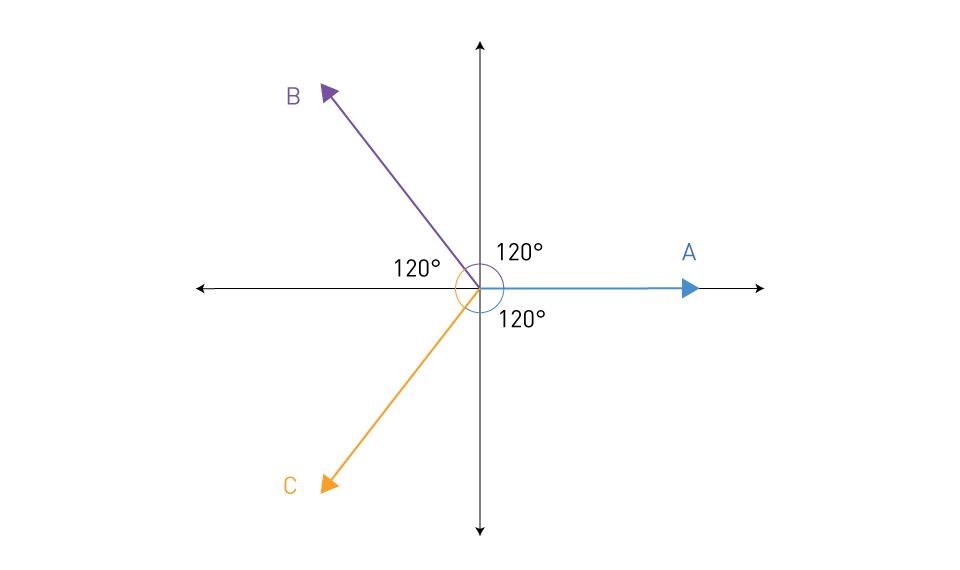
Figure 19: Phasor diagram of a Y-connected generator
Line vs. Phase Quantities
In three-phase systems, it is essential to comprehend the distinction between line and phase quantities:
Line Quantities: The voltage and current measured between any two lines or system phases are referred to as line quantities. The line voltage in a balanced power distribution system is called Vline or VL-L. The current that passes through every line is known as the line current. The line current in a delta connection is √3 times the phase current, although the phase and line voltages are the same. The line and phase currents in a star connection are equal, but the line voltage is approximately three times the phase voltage.
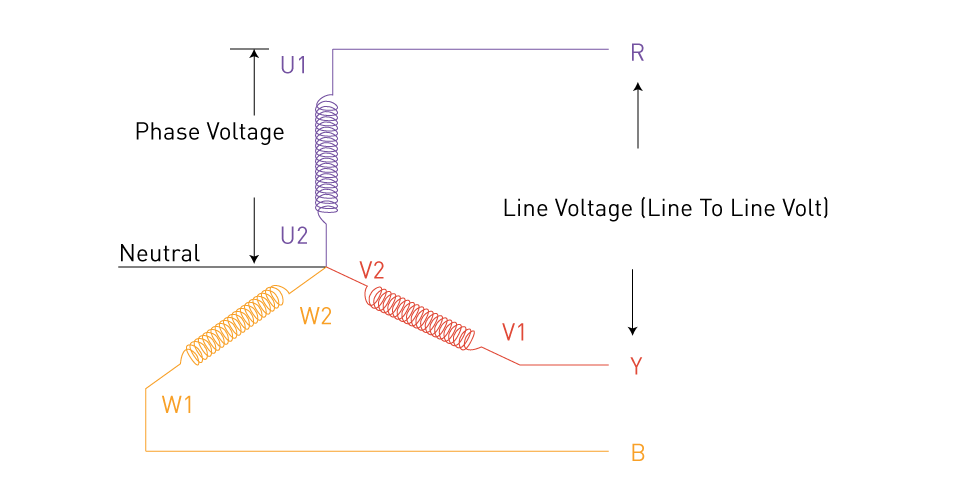
Figure 20: Line vs. phase voltage
Phase Quantities: Phase quantities are the voltage and current that are measured in the system between a phase and the neutral point. The phase and line voltages in a delta connection are equal. In a star connection, Vline = √3 Vphase, indicating that the line voltage is greater than the phase voltage.

Figure 21: Line vs. phase quantities
Balanced vs. Unbalanced Systems
To ensure effective operation and system stability, it is essential to distinguish between balanced and unbalanced systems while studying and using three-phase systems. When a load has the same impedance all throughout, it is said to be balanced. Because of this, the sources' currents will be the same except for the phase shifts that occur between them. An ideal situation for a balanced system is when the phase angles are precisely 120 degrees apart and the phase voltage magnitudes are identical. On the other hand, an imbalanced system is characterized by differences in phase angles or voltage magnitudes, which can be attributed to defects in the system or imbalanced voltage sources that distribute load unevenly throughout the phases. This section emphasizes the systems' practical significance while examining the analysis techniques employed to assess them.
Analysis Techniques
Symmetrical Components: The symmetrical components approach is one of the main techniques for studying imbalanced systems. Using this method, the unbalanced set of phasors (voltages or currents) is broken down into three sets of balanced phasors: components with a positive, negative, and zero sequence. The components of the positive sequence indicate a forward-rotating phasor set that is balanced and resembles the original balanced system. Zero sequence components are equal in both amplitude and phase, whereas negative sequence components form a balanced set that spins in the opposite direction. Engineers may now examine each component independently thanks to this breakdown, which makes handling imbalanced conditions less complicated.
Phase Sequence Analyzers: Phase sequence analyzers are used in practical field analysis to identify phase sequences and detect abnormalities in phase order. The correct phase sequence is critical for the successful operation of three-phase motors and other equipment, since a reversed phase sequence can cause motors to operate backwards, potentially resulting in damage or potentially hazardous situations.
Load Flow Analysis: Load flow analysis in three-phase systems, particularly in power distribution networks, can be used to determine how unbalanced loads influence voltage levels, power flow, and system losses. This study is critical for effectively designing and managing electrical distribution networks, maintaining voltage regulation within acceptable limits, and finding infrastructure modifications or improvements.
Practical Importance
The difference between balanced and unbalanced systems, as well as the capacity to assess these situations, is extremely useful in many areas of electrical engineering and power system operation:
Efficiency and Reliability: Maintaining a balanced system promotes maximum efficiency while minimizing losses. Unbalanced conditions can cause excessive heating in machines and power equipment, lowering their lifespan and reliability.
Safety: Unbalanced systems can produce hazardous situations for both equipment and individuals. For example, extreme imbalance can cause large neutral currents, increasing the danger of electrical fires or equipment failure.
Quality of Power Supply: Disbalance in the system can have a negative impact on the quality of the power supply, including voltage sags, swells, and harmonics, which can disrupt the workings of sensitive electronic equipment and industrial operations.
Regulatory Compliance: Power utilities as well as industry must follow standards and regulations which define the permissible amounts of voltage imbalance. Techniques of analysis for recognizing and reducing imbalance are thus essential for compliance and operational excellence.
Applications of Three-phase Systems
Three-phase AC power systems provide the foundation for modern electrical distribution networks, offering a dependable and efficient way of supplying electrical energy to a broad range of applications. Three-phase systems provide considerable benefits over single-phase systems in terms of power density, efficiency, and stability, making them ideal for powering huge industrial machines as well as fulfilling the energy demands of commercial and residential buildings. This section covers the many applications of three-phase systems in industrial, commercial, and residential settings.
Industrial Applications
Three-phase systems are crucial in the industrial sector since they can offer the high-power levels required by heavy machinery and equipment for production. The following are some significant industrial applications:
Motors and Drives: Three-phase induction motors are commonly employed in industries because to their durability, simplicity, and efficiency. These motors provide power to conveyors, pumps, fans, compressors, and other automated gear used in industrial operations.
Welding and Metal Fabrication: Three-phase alternating current is widely employed in welding and metal manufacturing, because of its capacity to generate the high currents required for welding processes.
Industrial Machinery Operation: Three-phase systems are essential in manufacturing plants for powering heavy machines. They deliver steady, dependable power, increasing machine efficiency and lowering operating expenses. Furthermore, regulated power distribution reduces motor vibrations, increasing equipment lifespan and lowering maintenance requirements.
Heating and Cooling Systems: Large-scale heating, ventilation, and air conditioning (HVAC) systems in industrial environments frequently use three-phase power to meet the high energy demands of heating components and cooling compressors.
Commercial Applications
Three-phase systems provide considerable benefits to commercial establishments such as office buildings, shopping malls, and entertainment venues. Key applications include:
HVAC Systems: Commercial buildings require substantial heating, cooling, and ventilation systems to ensure comfort and air quality. Three-phase power provides the energy required for big HVAC systems, enabling efficient operation.
Lighting and Elevators: To meet high power demand and enhance energy distribution, high-rise buildings commonly use three-phase systems to power advanced lighting systems and elevators.
Data Centers: Three-phase power is essential for data centers, which house computers and networking devices that need a lot of electricity. Three-phase systems enable efficient power distribution and redundancy, which are necessary for continuous operation.
Residential Applications
While single-phase power is popular in residential settings, three-phase systems are used in some contexts to improve efficiency and power capacity.
Large Homes and Apartment Complexes Three-phase systems can be utilized in extensive residential complexes and large residences to uniformly spread the load, maintaining a reliable power supply and decreasing the possibility of individual phases overflowing.
Electric Vehicle (EV) Charging: As electric vehicle use grows, three-phase electricity provides a solution for high-speed charging stations, allowing for quicker charging times than single-phase alternatives.

直接登录
创建新帐号